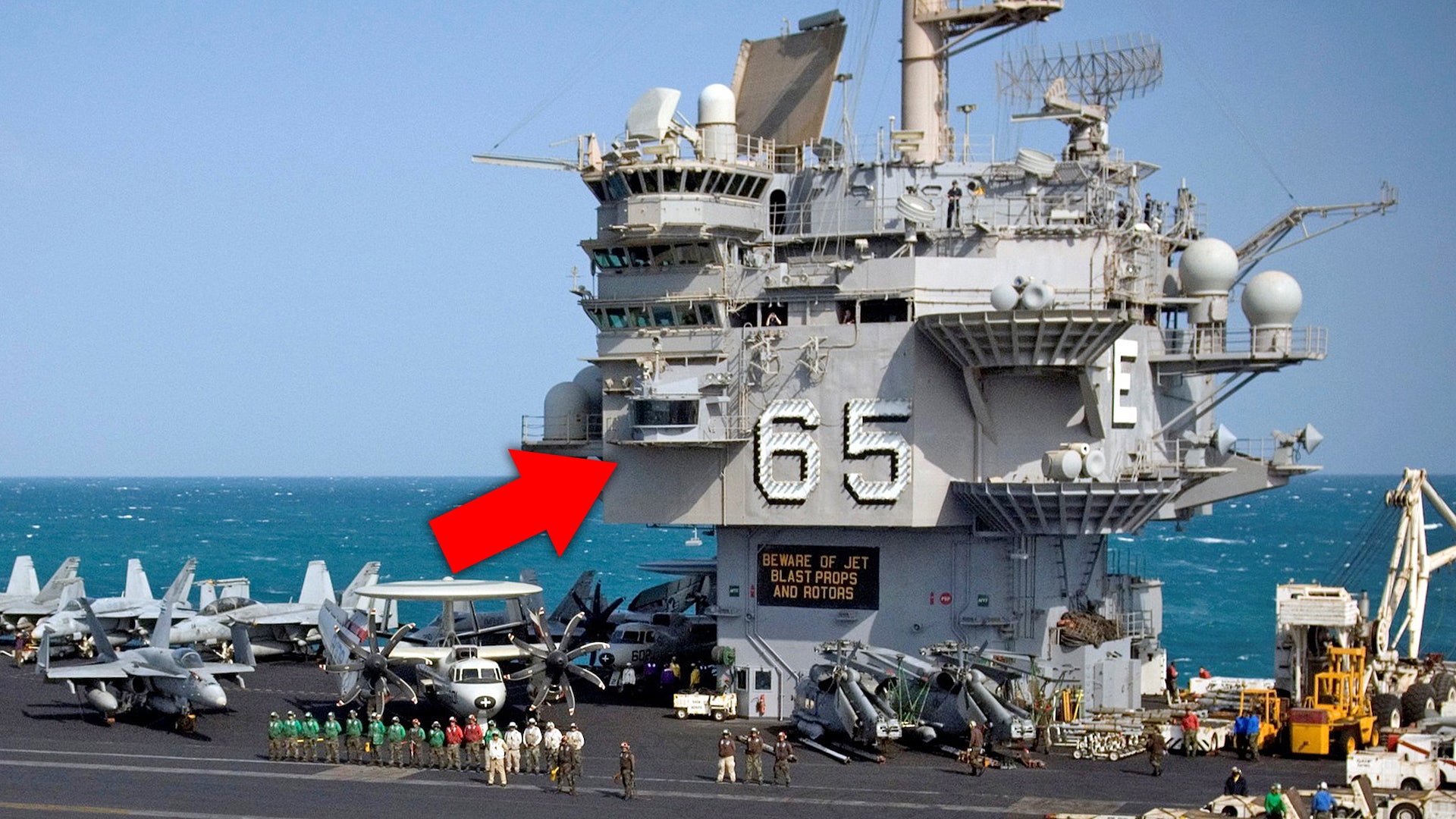Aircraft carrier island superstructures are complex and ever-changing steel castles that are bristling with appendages and pockmarked with apertures. Over the years, a carrier’s island can morph dramatically as new technologies and capabilities are integrated over a ship’s long service life—half a century for American nuclear-powered supercarriers. Upon close examination, one feature on American aircraft carriers’ islands that stands out is a seamless, wrap-around windowed room that juts out over the flight deck below. The panoramic window looks out of place next to all the smaller, armored windows that cover various sections of the island. Still, you may have never noticed or thought about this unique enclosure before, but you probably aware of the products it produces.
The Island Camera Room has served an essential role aboard U.S. aircraft carriers over decades. Inside, a sailor mans a television studio-like camera that has the ability to pan across the entire flight deck, sweeping a radial arch that is mirrored by the glass surrounding them.

All flight operations are recorded from this place, with each launch and recovery being documented for a number of reasons. These include providing situational awareness to crew scattered around the inside of the ship to provide a visual record of events should disaster strike. The latter has resulted in some of the most horrifying and spectacular footage in aviation history.



The panoramic windowed pod of sorts seems to have been deployed as part of a refit initiative that occurred sometime in the 1980s with the installation showing up on all classes of carriers, from the Forestall class USS Ranger to the first-in-their-class USS Kitty Hawk and USS Midway to the unique USS Enterprise to the Nimitz class of supercarriers. Still, the general concept goes back even farther than that, to the early 1960s, as far as we can tell, when flat-pained semi-enclosed trapezoidal or square structures provided a similar capability.
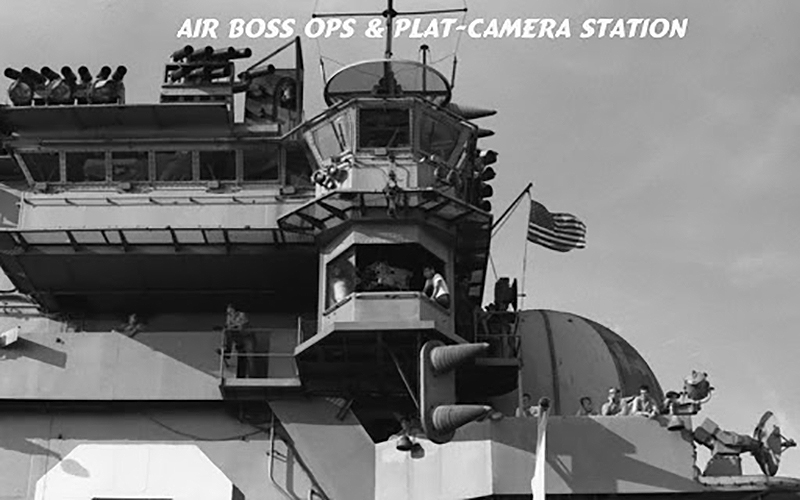
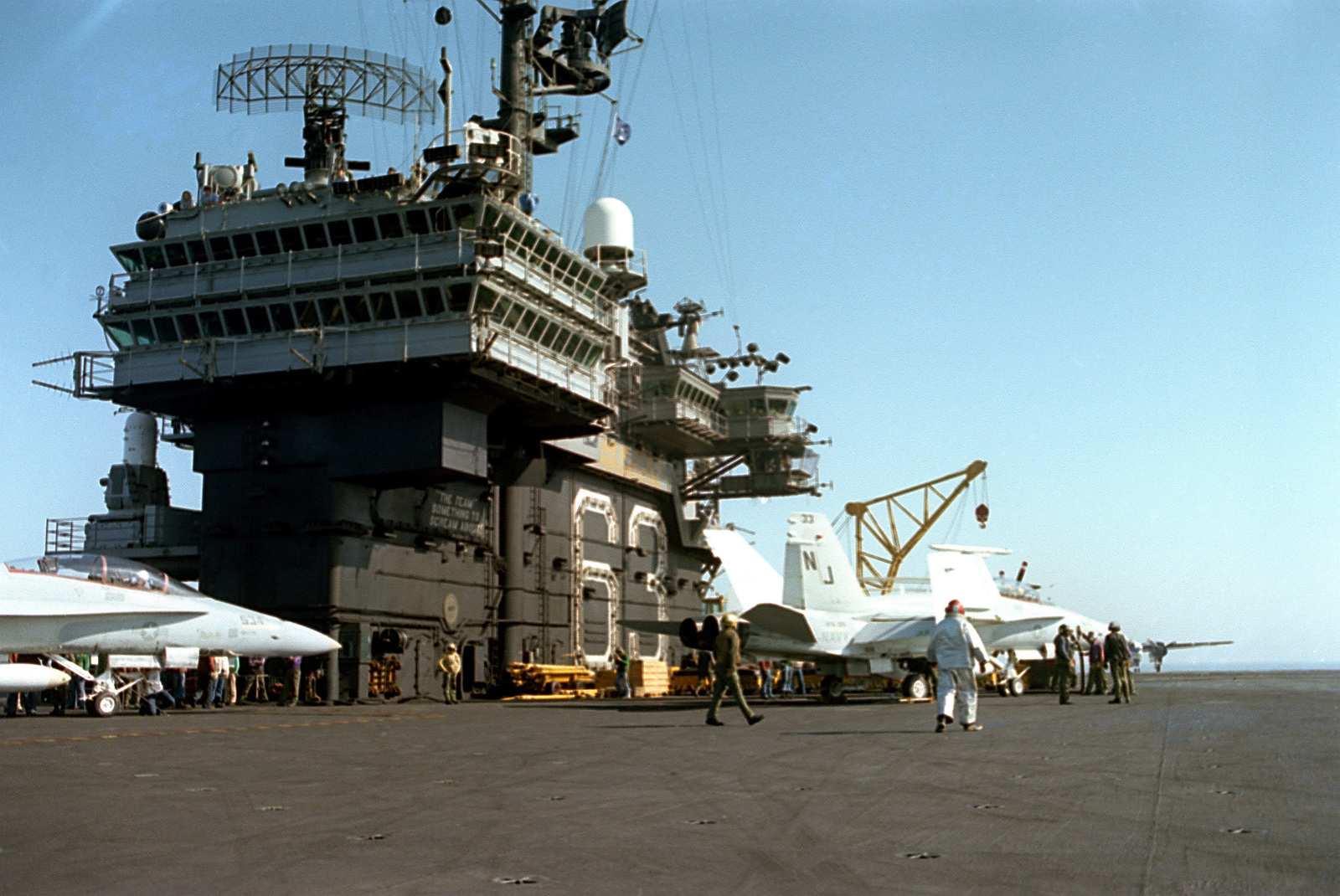
You can see the original convertible configuration on the Nimitz class carriers and how they are outfitted today below:


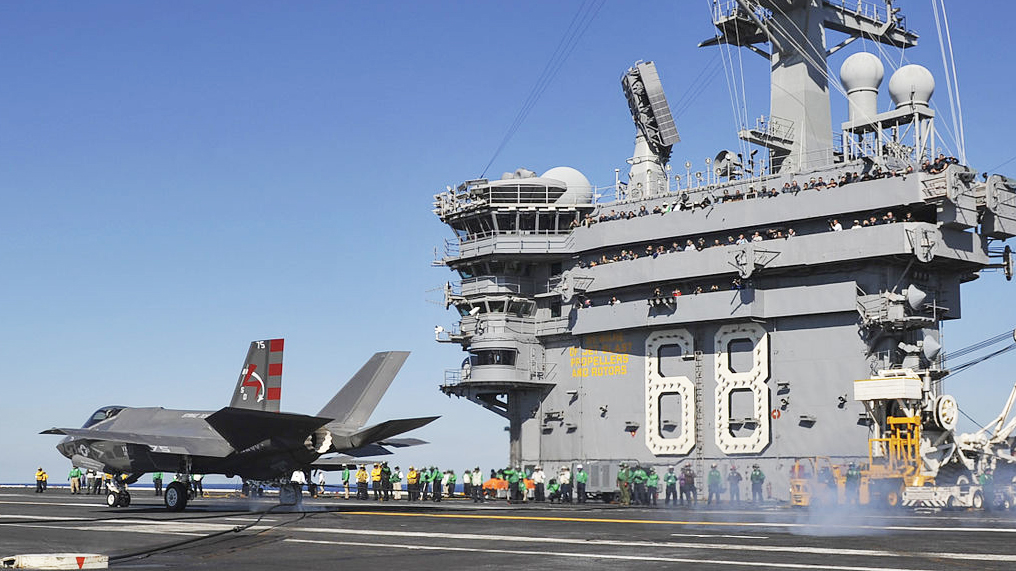
Like everything else, USS Enterprise (CNV-65) was unique. Its original island didn’t gain any sort of camera room enclosure until after being commissioned. Later, after her deep refit, she received an Island Camera Room that jutted out from her box-like island.


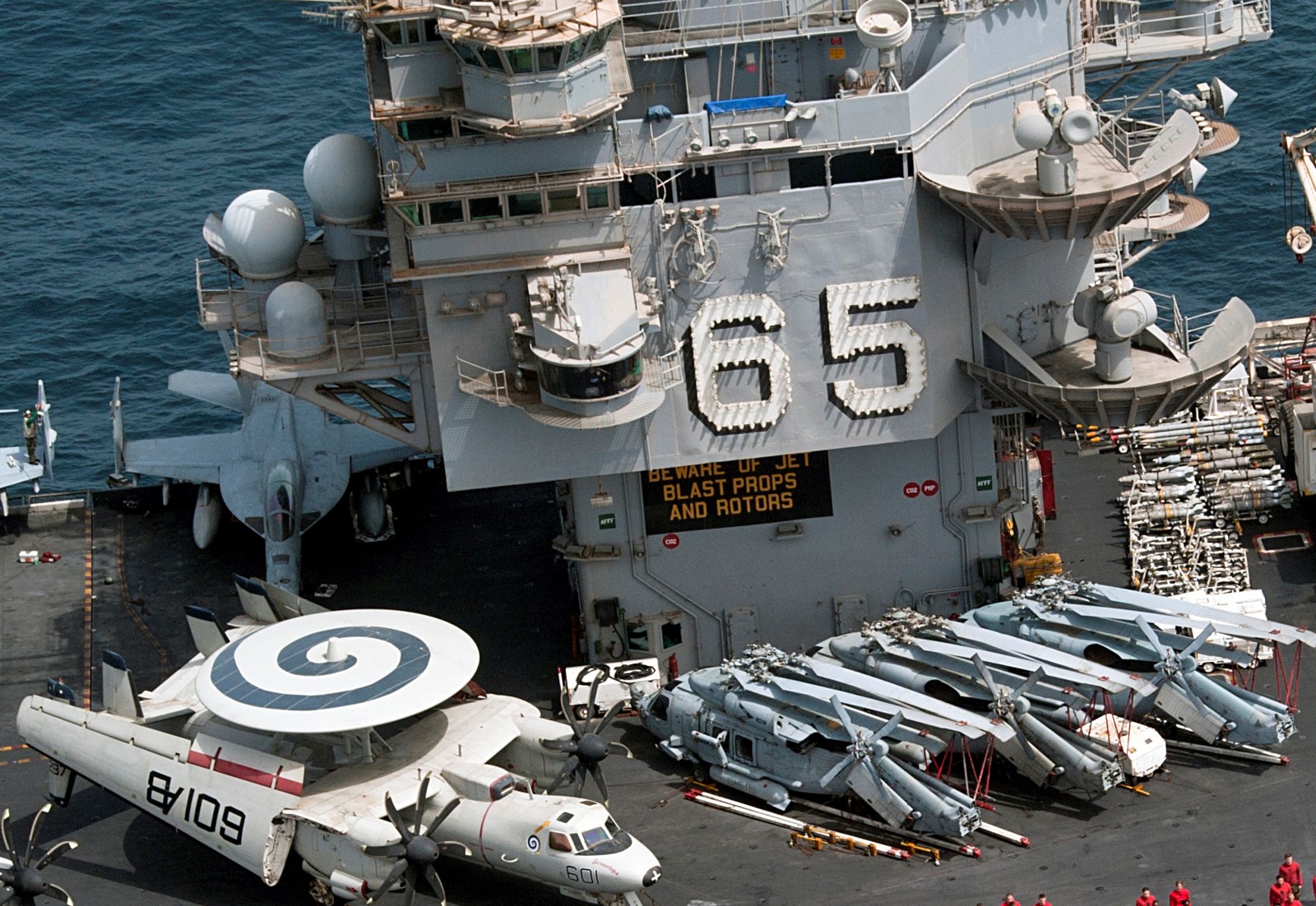
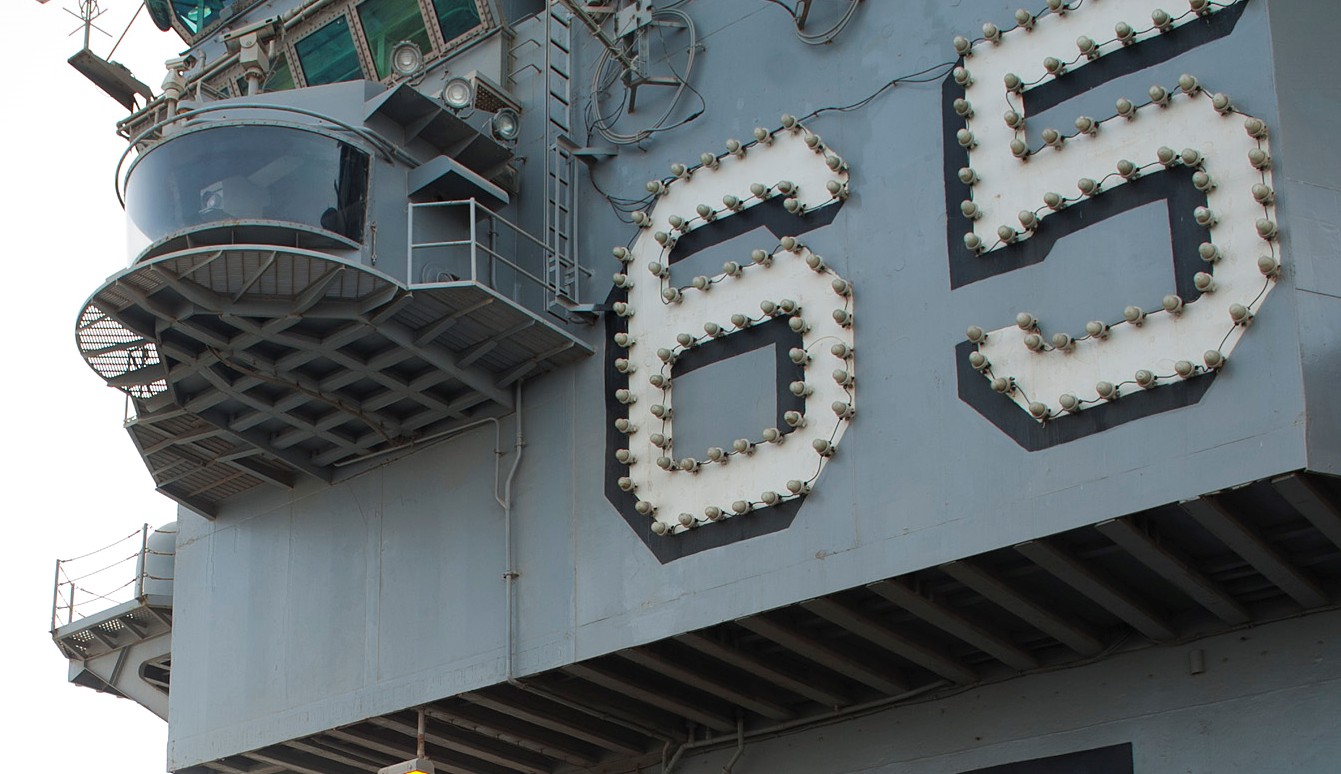
Before those enclosures became common on American carriers, sailors would film operations while totally exposed to the elements, which was not a pleasant experience when the ship was being pounded by heavy weather.
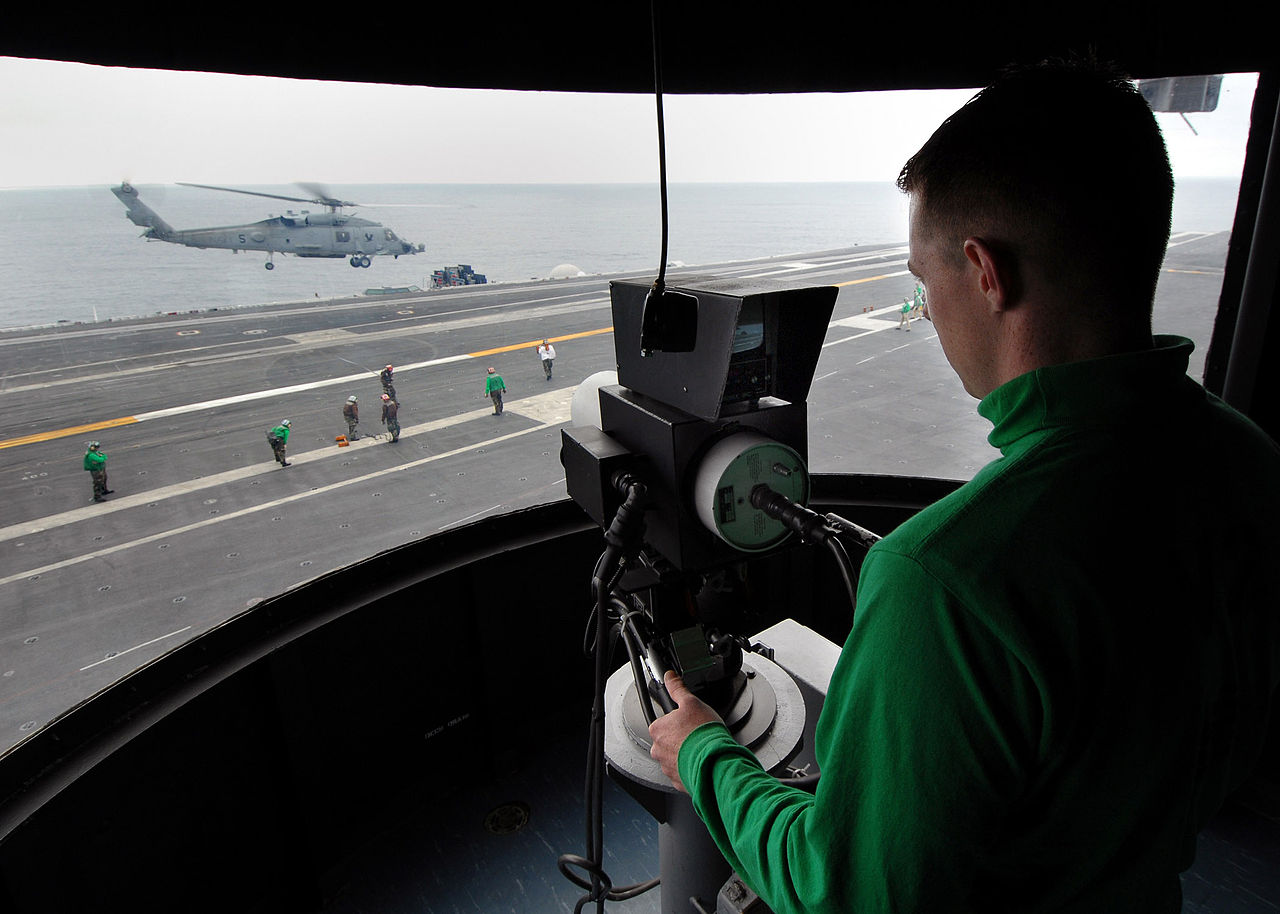
The video captured here feeds into the ship’s Integrated Launch And Recovery Television Surveillance system, which has multiple video feeds monitoring launch and recovery operations around the deck, including a camera embedded in the ship’s deck and centered on the landing glideslope that is usually referred to as the Pilots Landing Air Television, or PLAT.

The Island Camera Room is set to one day become a thing of the past. The new Ford class supercarrier does not have this feature. It seems that it is hard to justify it with current technology, where a series of fixed close circuit cameras could cover the entire deck in high-definition and provide the ability to digitally zoom in on things of interest during or after a recording has taken place. In other words, a single camera wouldn’t be limited to recording one area at a time. It would also eliminate the need for an actual camera operator. Even a remote gimballed camera with an operator in the loop would eliminate the need for such a unique facility altogether.

So, now you know where all those crazy carrier aircraft operations videos come from. A room with literally the best view of flight operations on the entire ship.
Contact the author: Tyler@thedrive.com
